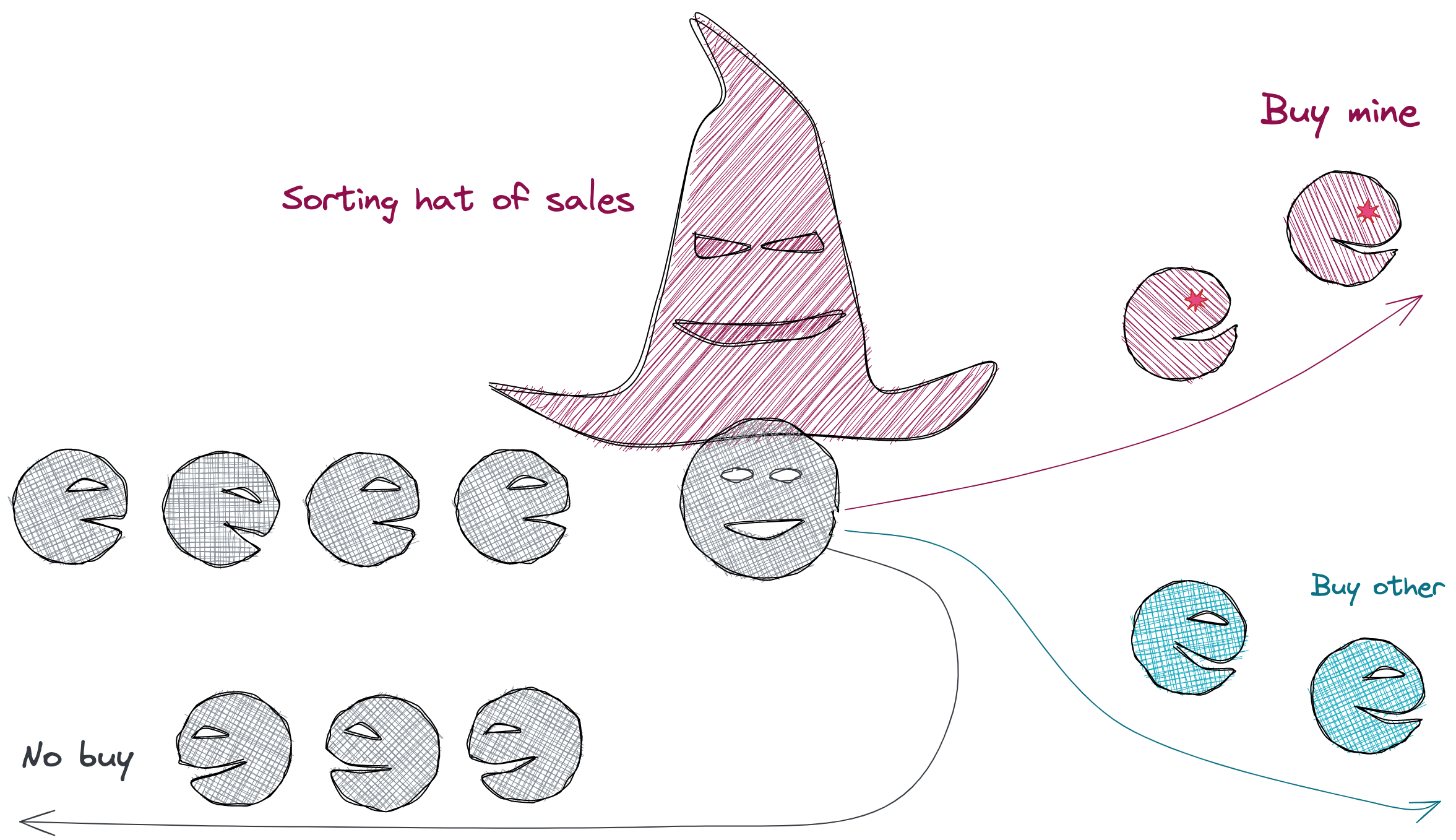Always be closing. Always be closing.
- Alec Baldwin’s character in Glengarry Glen Ross
Welcome to part 7 of the series on “How to be a game changer”. You can find the previous posts here 1, 2, 3, 4, 5, 6.
As an engineer, I’ve had an aversion to sales for a long time. It seemed like something which doesn’t add value in the grand scheme of things, but instead it just shuffles it around. I had this view of sales being adversarial, and zero-sum. I win, you lose, or vice versa. It seemed to me that when a salesperson makes a deal, they are somehow tricking the other person into getting something bad for them. It felt like it does a lot of persuasion to twist someone’s arm into a bad deal for them. Over time, my mindset about sales changed, and I started seeing salesmanship as a service to the customer.
I started to look at sales not through the prism of how much do you close, but through the prism of how much you and your counterpart LEARN about whether what you’re selling fits for them. If as a salesperson you uncover whether and how your product will best help the customer, you are actually providing a service to that customer in the form of education. If you focus on maximizing the amount of education service you provide, and uncovering situations where the product is a natural fit, then you are no longer playing a zero-sum adversarial game, and instead you are now playing a win-win game.
You opt out of thinking of your customer as an adversary.
This becomes harder to do in a competitive market. You may be selling a product, or an idea, or an action or a philosophy, or your own personal brand. The general “selling” is the act of getting a customer to choose to “buy your product”. For this, they not only have to pick your product among many others, but they also need to have enough conviction to buy any product at all! There are two steps - the first is “buy”, and the second is “yours”. By focusing on providing education and uncovering the natural “buy” and solving for the benefit of the customer, it becomes much easier to transition to the “yours” step afterwards. The customer can be annoyed to hear reasons why product A is better than product B if they don’t want either one!
It is also a valid thing to recommend to “not buy”. Some people may think this is a reverse psychology trick. But another way to look at why this reverse psychology works at all, is that this is exactly what a you as a salesperson focused on the “buy” problem will do if you think it is not the right fit - recommend a no-buy and let everyone move on. By doing that you have already provided a win to the customer, by saving them from a bad decision, and you’ve added a win for yourself, by improving that relationship with the customer. That same customer may not be buying this time, but their circumstances may change, or they may have friends who are better fit, and spread the word. Furthermore, there is an extra win there. That extra win is turning the market away from being a “lemon market” where everyone is selling shit, and one step closer to a useful market where both customers and sellers profit. This extra win can help grow the market itself.
By helping the customer, you put on your sorting-hat hat. You help the customer find their best outcome, and sometimes they end up buying from you. Over time, you also learn from them, about which types of customers are the best fit, and how you can change your product to address the ones for whom it is not.

Today, as an entrepreneur I may need to pitch my company to customers, investors, or potential employees. There can be an explicit “ask” in customer interviews (buy my product), elevator pitches (give me money) or job interviews (come work for me). By trying to opt out of fixating on the ask, and turning towards communicating and conversing, I can help potential employees find their happiness better, and potential investors see more clearly if this would be a great fit. The “buyer” might not volunteer any information explicitly, but there are always cues, and those turn a pre-determined pitch to a dynamic conversation. If both of us are open and listening, we often reach a much more amicable solution which we didn’t even anticipate. I believe that being systematically focusing on improving their outcomes will also improve my outcome over time.
Thanks to Sylvain Kieffer for spotting grammar typos in this post.